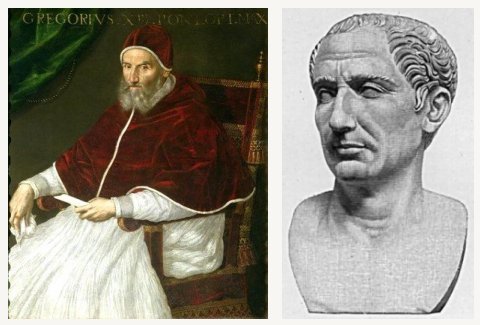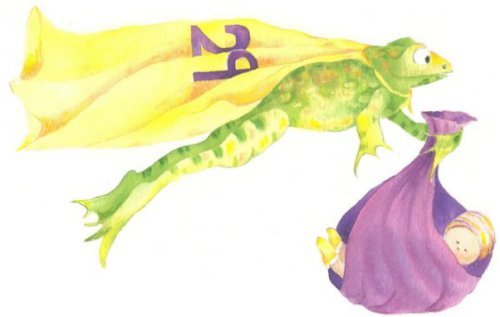Everything you need to know about Leap Years
February 29 crops up every four years, but what is a leap year?
Why do we have leap years?
A leap year, where an extra day is added to the end of February every four years, is down to the solar system's disparity with the Gregorian calendar.
A complete orbit of the earth around the sun takes exactly 365.2422 days to complete, but the Gregorian calendar uses 365 days.
So leap seconds - and leap years - are added as means of keeping our clocks (and calendars) in sync with the Earth and its seasons.
Why does the extra day fall in February?
All the other months in the Julian calendar have 30 or 31 days, but February lost out to the ego of Roman Emperor Caesar Augustus.
Under his predecessor Julius Caesar, February had 30 days and the month named after him - July - had 31. August had only 29 days.
When Caesar Augustus became Emperor he added two days to 'his' month to make August the same as July.
So February lost out to August in the battle of the extra days.
Technically, a leap year isn't every four years
The year 2000 was a leap year, but the years 1700, 1800 and 1900 were not.
There's a leap year every year that is divisible by four, except for years that are both divisible by 100 and not divisible by 400.
The added rule about centuries (versus just every four years) was an additional fix to make up for the fact that an extra day every four years is too much of a correction.
Julius Caesar vs Pope Gregory
The Roman calendar did have 355 days with an extra 22-day month every two years, until Julius Caesar became emperor and ordered his astronomer Sosigenes to devise a better system in the 1st Century.
Sosigenes decided on a 365-day year with an extra day every four years to incorportate the extra hours, and so February 29th was born.
As an earth year is not exactly 365.25 days long Pope Gregory XIII's astronomers decided to lose three days every 400 years when they introduced the Gregorian calendar in 1582.
The maths has worked ever since but the system will need to be rethought in about 10,000 years' time.
Is February 29 a bank holiday?
It's not - but there is a campaign to make February 29 a bank holiday.
Workers have realised that every leap year, they have to work one extra day for no extra pay.
If a person earns the national average salary of £26,500 a year, that works out at £2,208.33 per monthly payslip – which breaks down to £71.24 per day in a 31-day month but a daily wage of £78.87 in February.
This realisation prompted Karl Savage, who was a high school teacher from Maryland, to try and kick-start the “No Work on Leap Day Revolution” in 2008, when the extra day fell on a Friday.
Other calendars require leap years
The modern Iranian calendar is a solar calendar with eight leap days inserted into a 33-year cycle.
The Indian National Calendar and the Revised Bangla Calendar of Bangladesh arrange their leap years so that the leap day is always close to February 29 in the Gregorian calendar.
What if you're born on February 29?
The chances of having a leap birthday are one in 1,461. People who are born on February 29 are referred to as "leaplings", or "leapers". In non-leap years, many leaplings choose to celebrate their birthday on either February 28 or March 1, while purists stick to February 29 for the occasion.
Some suggest those born before midday on February 29 should celebrate their birthdays on February 28, while those born in the afternoon and evening of the 28th should celebrate their special day on March 1 (St David's Day).
Those born around midday are less fortunate when it comes to picking a side.
About 4.1 million people around the world have been born on the 29th.
Pisces is the zodiac sign of a person born on February 29, and amethyst is the birthstone for this month.
Photo:Ja Rule
Famous people born on a leap day
The chances of having a birthday on a leap day are extremely slim - the odds are one in 1,461 to be exact - and there's quite an eclectic mix of famous people born on the day.
John Byrom - Romantic poet
Pope Paul III - 16th Century pontiff
George Bridgetower - 19th Century musician
Ann Lee - leader of the Shakers
Gioacchino Rossini - Italian composer
Charles Pritchard - British astronomer
Sir Dave Brailsford - English cyclist and coach
Tony Robbins - Motivational speaker
Alan Richardson - composer
Darren Ambrose - English footballer
Ja Rule – rapper
Why does the woman propose on a leap year?
Leap years are also marked as a time for women to propose to men.
One theory is that the custom dates back to the 5th Century, when, legend has it, an Irish nun called St Bridget complained to St Patrick that women had to wait too long for their suitors to propose. St Patrick then supposedly gave women the chance to ask the question every four years.
The tradition is not thought to have become commonplace until the 19th Century.
Then there's the theory that Queen Margaret of Scotland was behind the fabled Scottish law of 1288. The law allowed unmarried women the freedom to propose during a leap year, and the man who refused was handed a fine.
The truth behind this tale is dubious at best - after all Queen Margaret was just eight years old when she died and scholars have been unable to find a record of the law.
Related Posts







